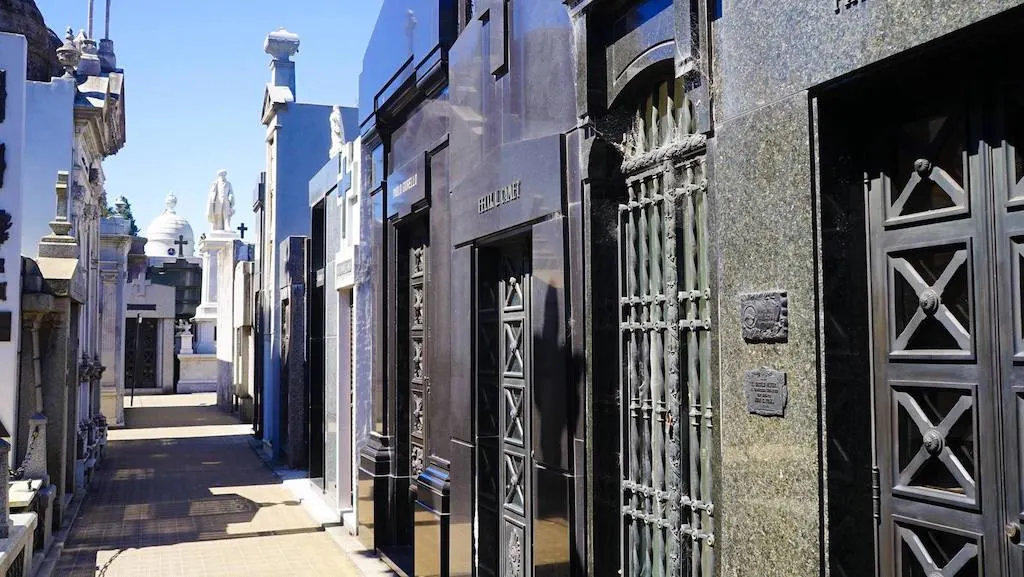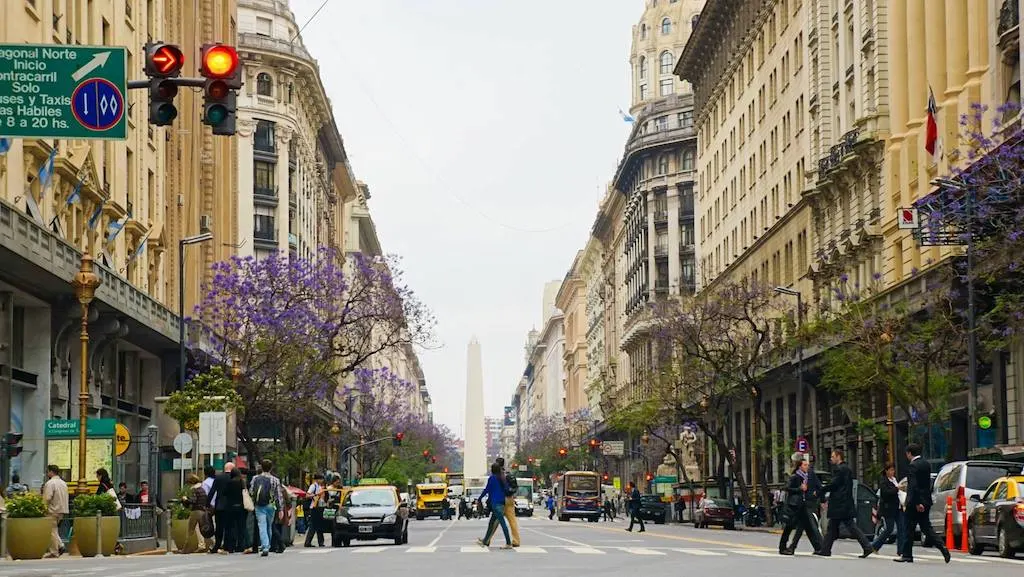Expert travel storyteller Jordan Adkins, founder of InspiredByMaps.com, brings a decade of adventures across 101 countries and 450+ UNESCO sites into rich, off-the-beaten-path narratives, melding ecological expertise with genuine, seasoned travel insights. His full bio can be found here.
Argentina is one of the world’s most captivating travel destinations, a country of extremes from the sophisticated vineyards of Mendoza and the urban jungle of Buenos Aires to the (real) jungles surrounding Iguaza Falls and the rugged peaks of Patagonia.
There is so much to see here, but discovering the most famous landmarks of Argentina is an excellent place to start…
This South American country is blends wilderness and elegance in a way we never thought possible before. At its heart is an arts and culture powerhouse dubbed the “Paris of South America,” but when you leave this megapolis, you’ll discover serene coastlines, snow-capped mountains, wind-open prairies, and exotic forests.
There are so many places to visit in Argentina; you could spend a lifetime explore its riches and only just scratch the surface. This is why we have developed this cheat sheet to help you with your travels.
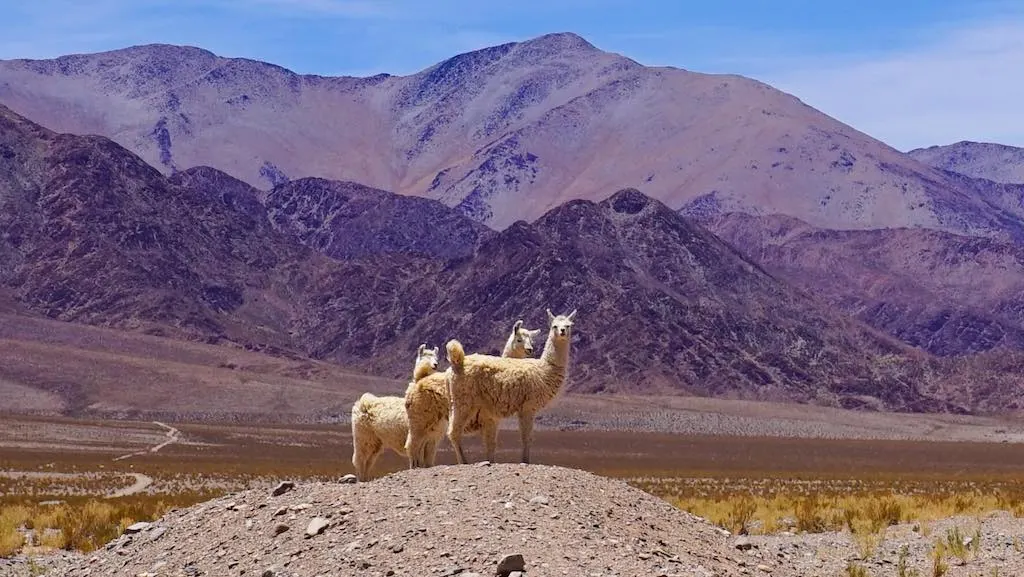
But first – what is a landmark?
A landmark is a recognizable natural or artificial feature that typically stands out from its environment and has become a local or national symbol. For modern tourists, a landmark is useful for navigation – in terms of both being a physical waypoint and in trying to help you organize your itinerary.
Getting the off-the-beaten-track is all well and good, but at the end of the day – there are some spots you just have to see when you visit a country. Think about the Sydney Opera House or Marina Bay Sands in Singapore. And Argentina has more than its fair share…
When approaching a trip to the land of tango and steak, you will want to tick off as many famous Argentian landmarks as you can – and the best way is to do that is often by renting a car, taking a tour or flying around. This is the second-largest country in South America (after Brazil) and the eighth largest in the world – so long bus trips are also pretty inevitable. We recommend bookaway to search help digest all the bus, ferry, and train options.
There is a lot to explore in Argentina…and no list of famous Argentinian landmarks could ever be exhaustive. But, we have tried to get the highlights by putting a call out to our few travel bloggers – and asking them to tell us about their favorite.
This way, you have a reasonable frame of reference to inspire your Argentina travels where you can choose a few landmarks that you absolutely cannot miss… or cram as many as possible into one trip.
If you plan it right and have enough time, you might just hit them all — plus discover plenty more of your own highlights of Argentina while you’re at it!
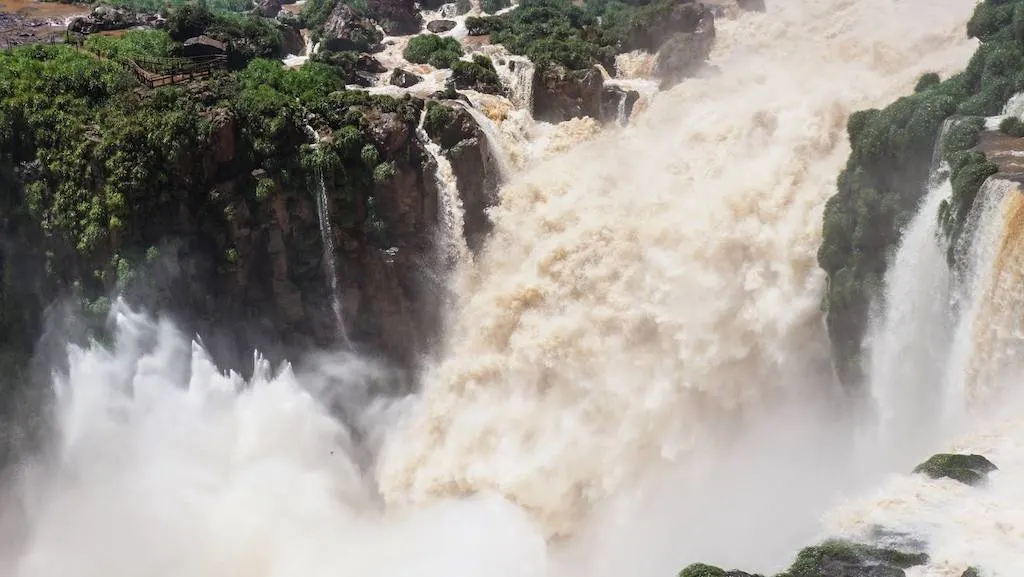
Page Contents
- 1. Cabo San Pablo
- 2. Monte León National Park
- 3. The Obelisk of Buenos Aires
- 4. Mendoza’s Wineries
- 5. Mount Aconcagua
- 6. The Tigre
- 7. The Rainbow Mountains
- 8. Teatro Colon
- 9. Tierra del Fuego National Park
- 10. Bariloche
- 11. Southern Fuegian Railway
- 12. San Ignacio Mini
- 13. Perito Moreno Glacier
- 14. The Curutchet House in La Plata
- 15. Iguazu Falls
- 16. Fitz Roy Mountain Range
- 17. The Cathedral of Córdoba
- 18. Salinas Grandes
- 19. The Beagle Channel
- 20. La Boca
- 21. Península Valdés
- 22. Quebrada de Cafayate
- 23. Talampaya National Park
- 24. Museo Arquelogia De Alta Montana
- 25. Recoleta Cemetery
1. Cabo San Pablo
Cabo San Pablo is one of the most beautiful places to visit in Tierra del Fuego, and you can go there on a day trip from Ushuaia, which is at 182 km and a good 2 hour and 45 minutes drive. The road trip itself is good enough a reason to go: you will follow the Ruta 3; go through Garibaldi Pass and by Escondido Lake.
As it is quite far from Ushuaia, not many people visit Cabo San Pablo – and this contributes to its wild beauty.
Facing the Atlantic Ocean, Cabo San Pablo consists of a long, pebble beach that – much like the rest of Patagonia – is swept by the wind. The lenga forest and the steppe are the perfect living environment for the many guanacos that populate the region.
Among the main landmarks in Cabo San Pablo, there is the lighthouse, built-in 1945 and bent during a 1949 earthquake, and eventually replaced by a new one in 1966 – the views from there are stunning.
Another spot you should not miss is the Desdemona wreck. This cargo ship made in Germany and carrying a Dutch flag wrecked in 1983 and has remained there since. It’s quite a sight from the viewpoint close to the lighthouse, and even more impressive up close.
You can visit Cabo San Pablo independently if you have a car. Alternatively, you can opt for a tour with Tierra Turismo – it’s the only company based in Ushuaia that goes there. The tour includes a stop at Tolhuin to visit La Unión bakery (a quirky bakery with a unique history) where you can have a quick breakfast and freshen up; one at Cabo San Pablo where you will hike to the lighthouse and visit the shipwreck; and a final one at Estancia Rolito, a traditional family-run (and still working) estancia which is lesser-known to tourists.
You will want to be dressed appropriately for this day trip – temperatures can get quite cold even in the summer, so take a hat, gloves, a scarf, and a good windproof jacket. Hiking boots are needed.
Explored by Claudia Tavani from My Adventures Across The World
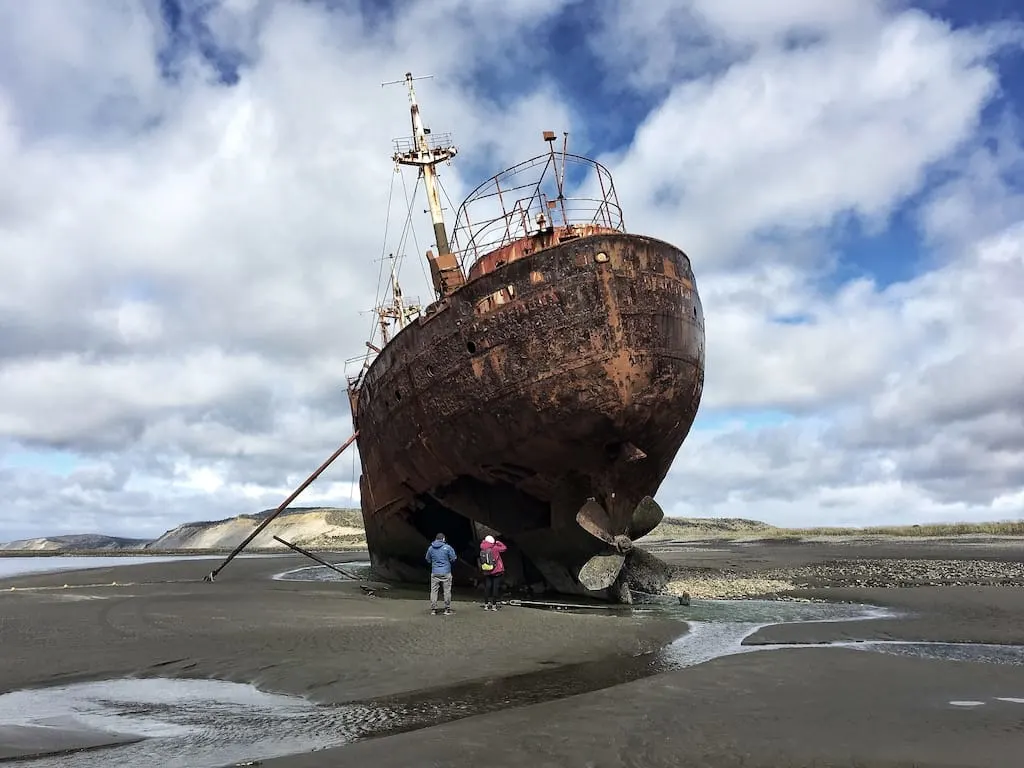
2. Monte León National Park
Monte León National Park (Parque Nacional Monte León), which got a name after a rock formation resembling a lion’s head, is a protected area in the Southeastern part of Argentina in Patagonia. This area, which stretches 36 km along the Argentine Sea coastline, was inhabited already 10000 years ago, and it was exploited for guano in the past as well.
In the late 19th century, it was explored by Francisco P. Moreno, creator of the Argentine National Park System, but at that time, Estancia Monte León belonged to the sheep farming company. It wasn’t until 2004 that a national park was established here with the help of private funds.
The farming company continued the business until 2006. At the administration building (located a few kilometers north of the park entrance), you’ll find a small museum where beside flora and fauna of the national park, also sheep farming business is presented.
In the national park, you’ll find abundant wildlife – from guanacos, cormorants, grey foxes, pumas (hopefully you won’t encounter any during your visit), and it is home to one of the most significant colonies of Magellanic penguins in Argentina. Monte León National Park is one of the best places in Argentina for getting an up-close look at penguins in Patagonia for free – walking alongside hundreds (sometimes thousands) of adorable birds is a truly unique experience.
The landscape in the national park is remarkable – vast steppes, high sandstone cliffs, extensive beaches, and rocky islands, and you’ll encounter a few paleontological sites there as well.
While the remoteness of the national park can be a benefit since this is a place where you won’t encounter crowds, and you’ll be able to walk in nature almost by yourself – it is also its disadvantage. Without your own transport, it is relatively difficult to visit it, and the park can be closed down anytime for a few days in case of heavy rain, which makes roads inaccessible. So to avoid disappointment, schedule and extra day or two to make sure you’ll be able to visit this hidden gem of Argentina.
Explored by Sandra from BlueMarble Vagabonds

3. The Obelisk of Buenos Aires
Much like in the Washington Monument obelisk on the National Mall in Washington, D.C., the Obelisk de Buenos Aires national historical monument has become an iconic landmark of Buenos Aires.
The Obelisk was erected in 1936 on the Plaza de la República at the intersection of avenues Corrientes and 9 de Julio and commemorated the quadricentennial anniversary of the city.
Standing 71 meters tall, this Obelisk was constructed in just 31 days (as opposed to over 40 years for the Washington Monument). The Obelisk stands on the site where the Argentine flag was ceremoniously hoisted for the first time in Buenos Aires in 1812.
Given its central location in the center of a very crowded place with crazy traffic, you should be careful when visiting the area. Pickpockets are known to operate, and police presence can vary. From the corners here, you can have a view of 9 de Julio Avenue, the widest avenue in the world, and another famous landmark of Buenos Aires.
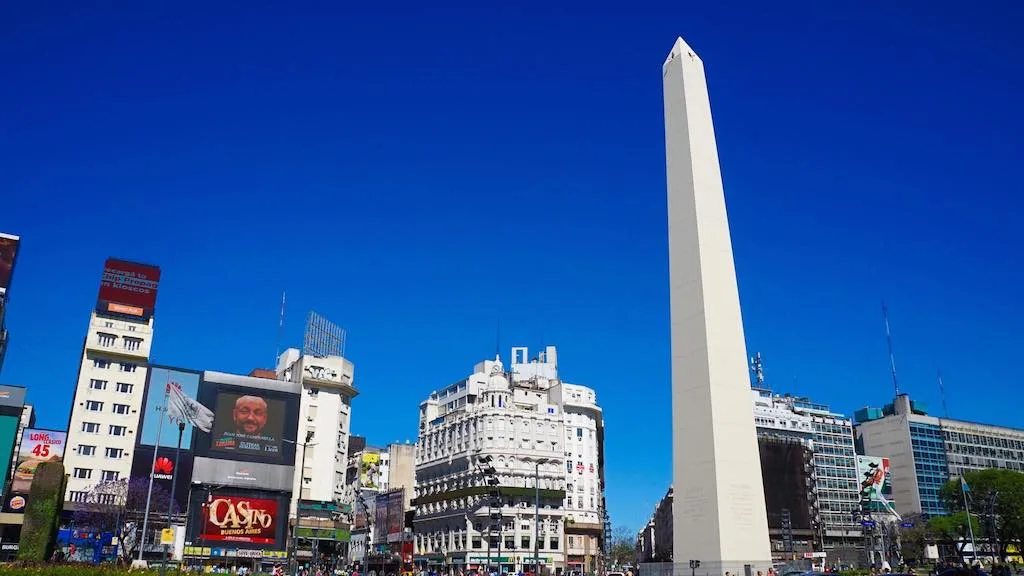
4. Mendoza’s Wineries
Argentina’s best wineries in Mendoza are a popular, year-round destination. This is the origin of the world-famous Argentina Malbec. The grape may be French, but it thrived here in Mendoza, where the arid, microclimate at the foot of the Andes Mountains created the perfect environment.
Mendoza is easy to reach from Buenos Aires with a 2-and-a-half-hour flight. There are also direct flights from Argentina’s other popular landmarks like Iguazu and Bariloche, making it easy to combine into the perfect Argentina itinerary.
There are three major wine regions, called departments, in Mendoza: Maipu, Lujan de Cuyo, and the Uco Valley. Maipu is closest to the city and easiest to reach by public transportation. Once there, rent a bike to explore the wineries.
Lujan de Cuyo is a little further from the city center but can still be reached by bus or an affordable taxi ride. Hire a private driver or rent a bike from Bacchus Bikes to visit these wineries.
The Uco Valley is furthest but is well worth the time and money involved. This department lies at the foot of the Andes Mountains and produces the country’s high-quality wines. Due to both the distance from the city and between the wineries, you need to hire a private driver to spend the day in the Uco Valley.
For the absolute best experience, skip the city of Mendoza altogether and stay at a hotel in the Uco Valley. Rent a car for maximum freedom and fall asleep with a view of the vineyards through your window. It will be an experience you never forget.
Explored by Erin of Sol Salute
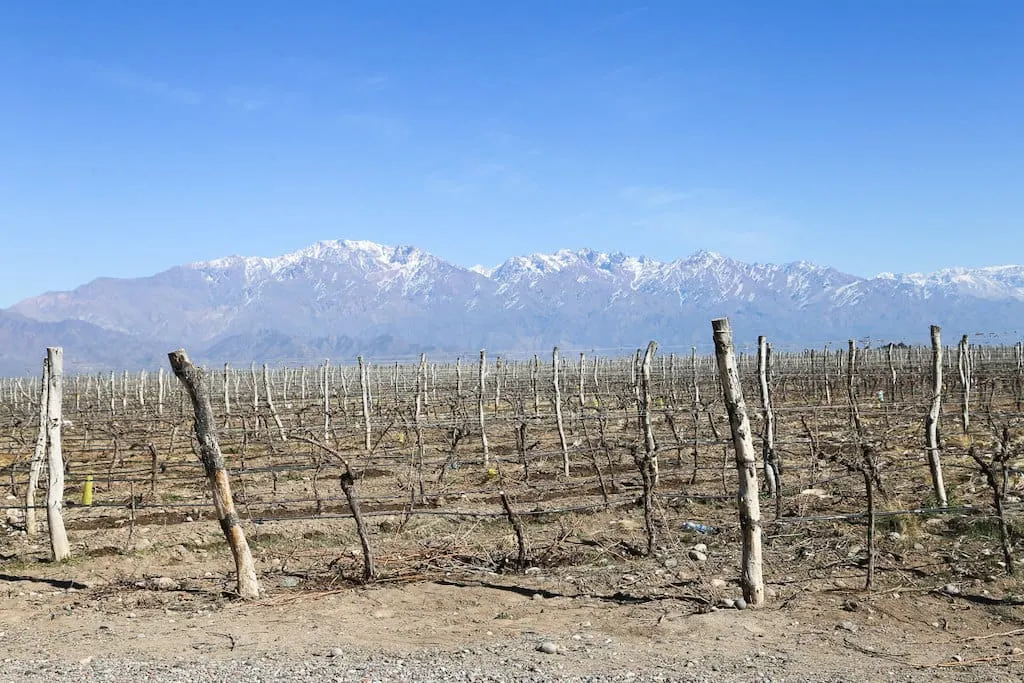
5. Mount Aconcagua
Mount Aconcagua is found within the Andes Mountain Range. It’s the highest mountain within North and South America. If you’re staying in Mendoza, you can get to Mount Aconcagua in about 3 hours driving. The drive is very scenic and relaxing.
Travelers from all over the world flock to Mendoza to visit Mount Aconcagua! Mount Aconcagua is considered one of the “easy” mountains to climb. It’s a popular place for hikers, backpackers, and mountain climbers. However, it’s also accessible enough for the average tourist.
If you so desire, you can hike to the base camp at Mount Aconcagua and back in one day. It only takes 4-6 hours, but there are many other shorter and more accessible trails in the area. You don’t necessarily need to hike to base camp to get incredible views.
When you arrive at the parking lot of Mount Aconcagua, you’ll be blown away by the breathtaking landscapes in every direction. The mountains appear rainbow with hues in yellow, green and red. The prettiest views are within the first hour or so of the hike to base camp.
You don’t need a guide or tour to hike here. The signs are very clear, and the trails are easy to follow. There’s also a small shop by the parking lot, which is extremely helpful if you forget something important (like sunscreen). Make sure to bring cash if you visit! You’ll need to pay the park entrance fee, and credit cards are not accepted.
Explored by Valentina from Valentina’s Destinations
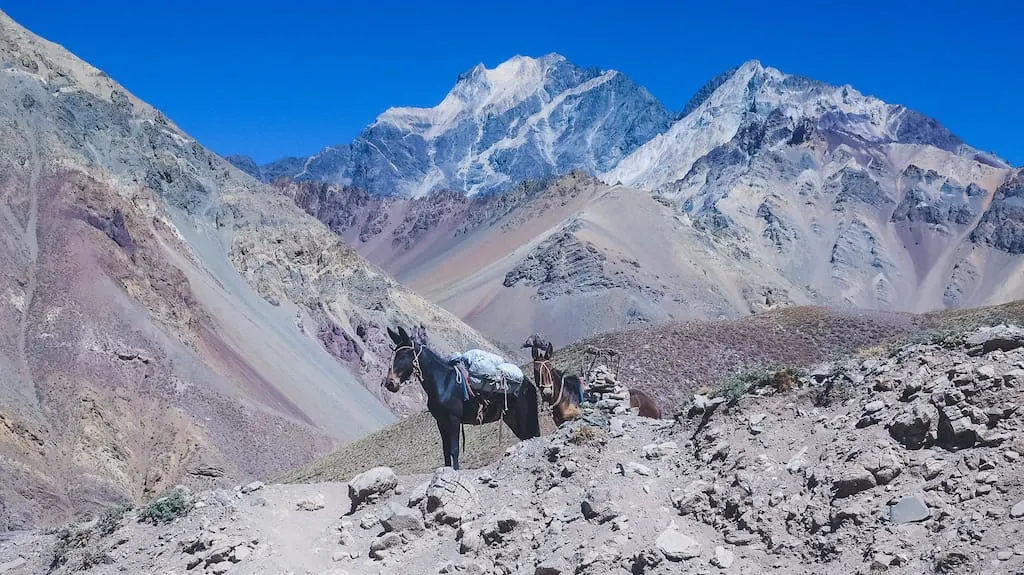
6. The Tigre
The Tigre is a town situated 28km north of Buenos Aires. It sits at the entrance to the Parana Delta. Tigre is named after the jaguars that used to be hunted in this region. The area is also populated with capybaras and other wildlife.
There are many attractions in Tigre, which makes it a perfect day trip from Buenos Aires. Firstly, you can cruise around the canals and wetlands. This area has many houses and even a museum and school that you can only access via boat.
This port city was originally a trading post for wood and fruit that would be brought to the area via the series of rivers that connect to it. The old fruit market has since been turned into a craft market and is a popular tourist attraction.
Museums in the area include the Mate Museum, Museum of Art, the Museo de la Reconquista, and two Naval museums. There is also a theme park in Tigre that is a popular attraction. The architecture is incredible in Tigre and walking around town you will see many beautiful buildings.
There are public transport options to reach Tigre. You can catch a train from the Retiro, which is the central train station in Buenos Aires. Be careful around Retiro, though, as it is a crime hotspot. From here, it takes about 45 minutes by train to reach Tigre. There are also buses between the two locations. Alternatively, you can book a private tour that will pick you up from your hotel and drop you back off again.
If you’re visiting Buenos Aires, Tigre is the perfect day trip location to include in your itinerary.
Explored by Beth from The Frugal Female Abroad

7. The Rainbow Mountains
Some places just truly take your breath away. Stop you dead in your tracks, mouth gaping, in awe – usually of nature’s pure majesty.
The Fourteen Colored Mountain, known locally as ‘Hornacal’, is just one of those places in Northern Argentina. Located near the famous Quebrada de Humahuaca, a UNESCO World Heritage site, the 14 Color Mountain, or the Rainbow mountain is one of the area’s most beautiful and yet surprisingly un-touristy sites.
The 14 Color Mountain is the result of fascinating geological processes but is effectively a simple outcropping of rocks from different periods. The sheer variety of colors on display resulted from the accumulation of different sediments from when this region was underwater 600 million years ago – hard to believe now that it’s stuck on top of the Andes.
It’s so high (around 4,100 meters above sea level) that you are likely to experience altitude sickness. If you have come straight from the lower altitudes of Buenos Aires — take your time and relax, there is no rush. Just bask in the view that you are unlikely to forget in this lifetime.
It feels like you are wearing some heavily tinted rainbow glasses, or gone a little bit overboard on the Instagram filters in real life. The bright blue sky and yellow grasses of the hills surrounding you work to exaggerate the rainbow-colored mountain even further.
At times I still can’t believe it was real and not an outrageous human-made structure part of DisneyWorld or a new advertising campaign for vivid paints. Luck, however, would have it that something so indescribably beautiful is only found in this isolated corner of the world, so this gem is undoubtedly safe from mass tourism and development.
While you might think it would be pretty complicated to get to such an undiscovered destination, getting to Fourteen Colored Mountain, a.k.a Hornacal in Northern Argentina is relatively easy on a road trip from Salta – and not impossible with public transport either!
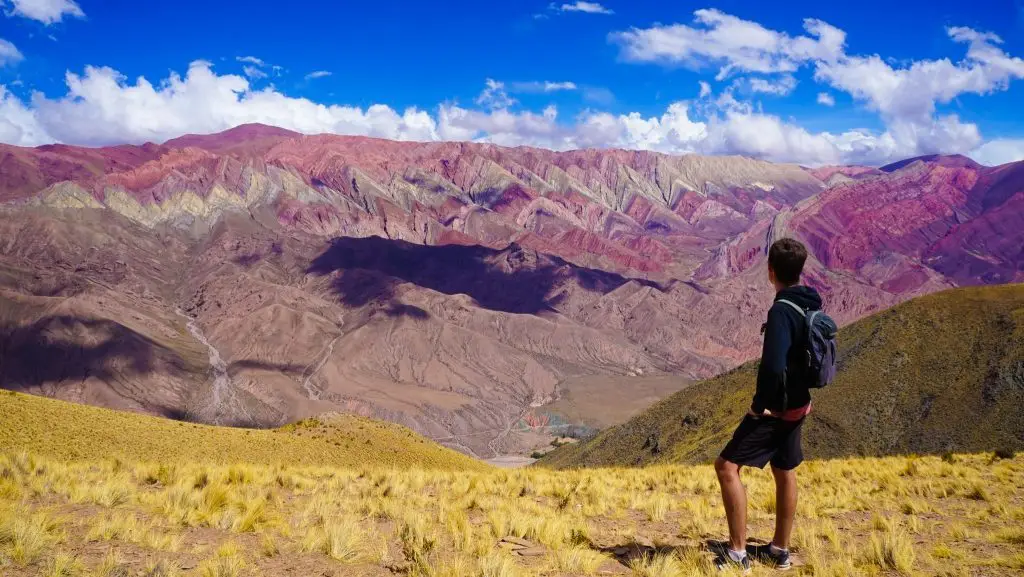
8. Teatro Colon
The Teatro Colón of Buenos Aires is one of the most prestigious opera houses anywhere in the world – and one of the most famous landmarks of Argentina. With a distinguished history, outstanding acoustic features, and rich architectural heritage, the Teatro Colon is considered equal with other famous opera around the world like the Vienna State Opera or the Metropolitan of New York.
The present Colón opened in 1909, replacing the original theatre and was frequented by the foremost singers and opera companies of the time. Following Argentina’s chequered economic fortunes, the Teatro Colón has waxed and waned since then. Still, after a full 5-year refurbishment in 2010, it is now considered acoustically speaking, amongst the five best concert venues in the world.
The horseshoe-shaped auditorium seats 2,487 seats over six floors and has a large central chandelier with 700 light bulbs. The feeling of standing in this room is indescribable. The history, the artistry, the expanse – all contribute to this storied building opulence. The interior has been inspired by Versailles, after all. If you can fit in an opera or ballet performance during your visit to Argentina, it would be well worth it.
Otherwise, there are daily guided tours where you can delve into the eclectic architecture and fascinating history of the Teatro Colón.
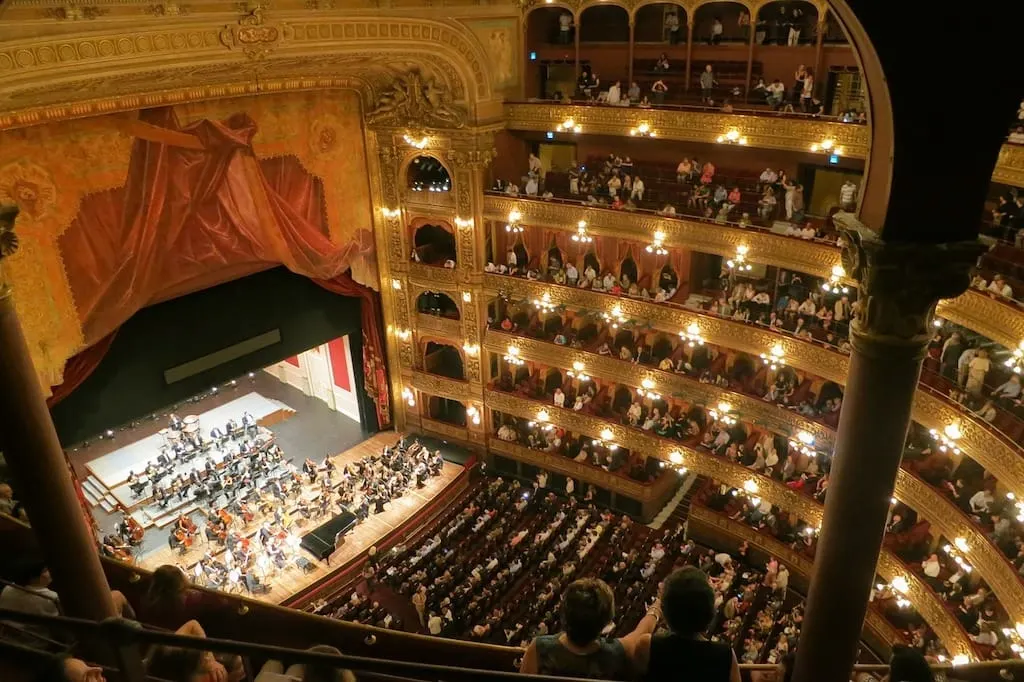
9. Tierra del Fuego National Park
Situated 20 minutes drive from Ushuaia, Tierra del Fuego National Park is Argentina’s southernmost park. The glaciers, waterfalls, mountains, and forests within Tierra del Fuego National Park attract numerous hikers and outdoor enthusiasts to Argentina’s oldest coastal national park, an enormous 156,000-acre area that extends all the way from Beagle Channel to the Chilean border and northwards to Fagnano Lake.
Suppose hiking is your thing, consider taking Senda Costera, a coastal path connecting Ensenada Bay to Lapataia Bay on Lago Roca. It offers a chance to see a rich diversity of wild plants and animals, including guanacos, foxes, kingfishers, condors, and king penguins. If you’d rather enjoy a comfortable train ride, there is the superb Southern Fuegian Railway, an authentic steam heritage train through the park to Canadon de Toro. Hop aboard this incredibly accurate replica train that once transported convicts, rock, sand, and timber between Ushuaia and the place of what now is Tierra del Fuego National Park.
Basing yourself in Ushuaia is ideal if you plan on exploring the park’s hiking trails or enjoying dramatic scenery along the coastline. Since it includes everything from tall waterfalls, dense forests, and peaks, this part of Argentina’s Patagonia region is definitely worth a visit.
There are several ways on how to get from Ushuaia to Tierra del Fuego National Park. If you want to save some money, buses from Ushuaia depart every hour. You may want to leave the city early in the morning if you are planning on hiking in the park. Head to the Ushuaia Bus Terminal on the corner of Maipu and Juana Genoveva to catch a shuttle leaving for the National Park.
Explored by Ivan from Mind The Travel

10. Bariloche
San Carlos de Bariloche is a beautiful town in the Argentinian Patagonia, near the border with Chile. The town is situated in the picturesque valley on the shores of the turquoise Nahuel Huapi Lake, surrounded by stunning mountains and the indigenous forest.
Bariloche is known as the adventure capital of Argentina. The town offers a great variety of outdoor activities for both the summer and winter seasons. From hiking, kayaking, rock climbing, and rafting during the summer months to skiing, snowboarding, and snowshoeing in winter. The most iconic views of Bariloche and the surrounding area tourists can get from Hotel Llao Llao (a short drive from the town) and from the top of Cerro Otto (accessible by cable car).
Hiking trails around Bariloche are some of the most scenic routes in Patagonia. The trails vary from easy family-friendly day-hikes to challenging multi-day trek. A visit to Los Arrayanes National Park is a must-do activity in Bariloche. The park is famous for its Arrayanes forest (Chilean myrtle). These beautiful trees with amber color trunks are unique to the area. Some of the trees are over 600 years old! Visitors can see some animals and birds in the park, such as huemul deer, guanacos, foxes, condors, eagles, woodpeckers, and more.
Bariloche is also called Argentinian Switzerland for its alpine-style architecture, chocolate and cheese factories, and emerald meadows. Gastronomic tourism plays an essential role in regional tourism. Chocolate, cheese, and wine tasting drive thousands of tourists to Bariloche every year. Many restaurants offer outside terraces where visitors can have a delicious meal while enjoying breathtaking views of the area.
There are flights and buses to Bariloche from Buenos Aires, Santiago de Chile, Mendoza, and some other biggish cities.
Explored by Campbell & Alya of the Stingy Nomads

11. Southern Fuegian Railway
The Southern Fuegian Railway, or more commonly referred to as “El Tren del Fin del Mundo” or “Train at the end of the world,” is a unique destination to visit in Ushuaia, Argentina. Ushuaia is considered the southernmost city in the world. Most travelers visit here before embarking on a cruise to Antarctica.
However, it’s more than just a stopover city.
Ushuaia was developed as a penal colony in the late 19th century, with prisoners arriving in the 1880s. In a few years, the prisoners built a proper prison for themselves under the supervision of the Argentinian government. While working, the prisoners created a railway to assist the transport of materials.
They initially used oxen to carry the materials from the mountain down to the town, In 1909, the government upgraded the line since the railway was bringing wood for heating, cooking, and building, and it had to get longer since the forest would be depleted continually. The prison closed in 1947 and is now a naval base.
The rail line was blocked by an earthquake in 1949 and was closed until 1994. It was rebuilt in luxury with champagne and dinner services available. Even if you’re not indulging in the luxurious aspects, enjoying the views of the Pico Valley. There is a stop at Cascada La Macarena Station for a viewing point and waterfall in the mountains.
Continuing on the journey, you’ll pass the Cemetery of Trees where tree stumps remain from the early 1900s. The National Park Station is the last stop, and you can explore on your own or take a return trip back to Ushuaia.
Thus today, the Southern Fuegian Railway or ‘the Train at the End of the World’ is a mixture of history and nature, making it one of the top places to visit in Argentina.
Explored by Pamela from The Directionally Challenged Traveler

12. San Ignacio Mini
San Ignacio Miní is one of many missions founded in Argentina by the Jesuits during the Spanish colonial period, and today is remarkable – if spooky – landmark to explore.
Located in the San Ignacio valley, close to the town of Posadas, it is one of four Jesuit Missions to be inscribed by UNESCO as World Heritage Sites. The ruins lay in deep, thick tropical forest and were built in the 17th and 18th centuries on lands originally occupied by Guarani indigenous.
By the middle of the 18th century, the San Ignacio Miní had a population of around 3000 mostly indigenous people who produced luxurious cultural and handicraft products, which was then traded with Spain and the rest of the world. In this sense, it is quite similar to the San Antonio Missions UNESCO Site in the USA – except when you visit today; they are almost entirely dissimilar.
The mission then fell into disrepair after Suppression of the Society of Jesus in 1767 and almost entirely destroyed by the Brazilians in 1817. Overgrown by impenetrable vegetation, the Argentina government somewhat restored the remains of the mission in 1940, and today the ruins are one of the best-preserved and most visited of all the missions.
The contrast between the iconic local red sandstone walls and the dense, green jungle is terrific – and you can easily spend half a day exploring the expansive site.
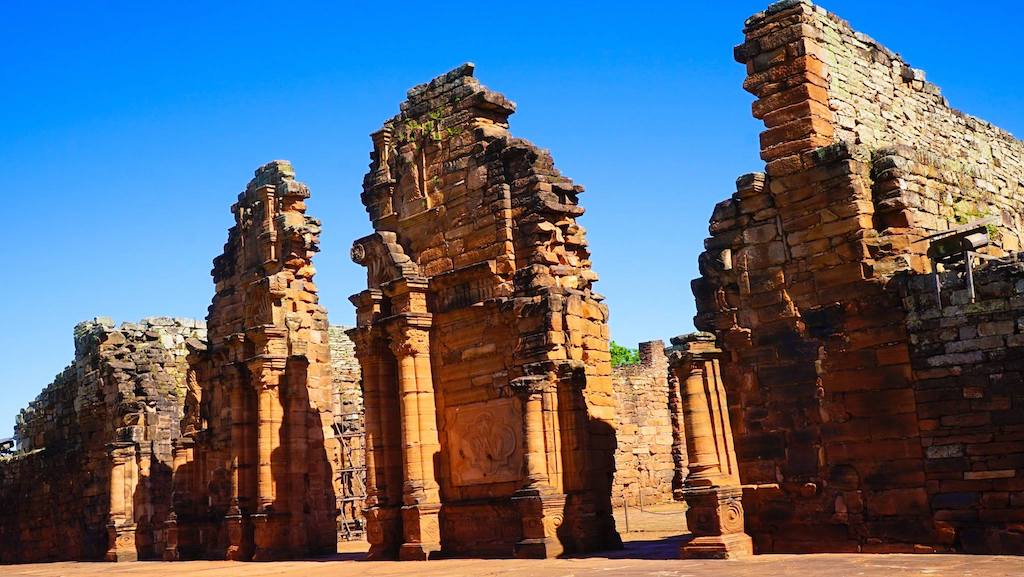
13. Perito Moreno Glacier
There are barely enough superlatives in any language to describe the wondrous Perito Moreno glacier in southern Patagonia. Imagine jagged glacial cliffs as tall as skyscrapers (60 meters high), sparkling white, and a gorgeous light blue in the sunlight.
Imagine the thunderous roar of the glacier as it creaks and groans, and then imagine the sight of chunks of ice bigger than cars breaking from the main structure and plunging into Lake Argentina below with a deafening crash, now resigned to the life of a floating iceberg.
And finally, imagine that what you’re seeing is just – pardon the pun – the tip of the iceberg. The glacier is 5 kilometers wide and 30 kilometers long. When my husband and I visited Perito Moreno, we spent four-and-a-half hours looking at the glacier, mesmerized the entire time.
Granted, its beauty was overshadowed a couple of weeks later on our cruise from Ushuaia to Antarctica, where we saw dozens of pristine glaciers in a single day. But if you’re not venturing to Antarctica, then Perito Moreno is likely to be one of the most incredible natural sights you’ll ever see in your lifetime. Remarkably, it’s still advancing, even as almost all other glaciers in the world are retreating due to climate change.
The gateway to the glacier is the small town of El Calafate. From there, it’s a further 80 kilometers to the glacier. Multiple bus companies run this route, which takes about 90 minutes each way.
Explored by Wendy Werneth from The Nomadic Vegan
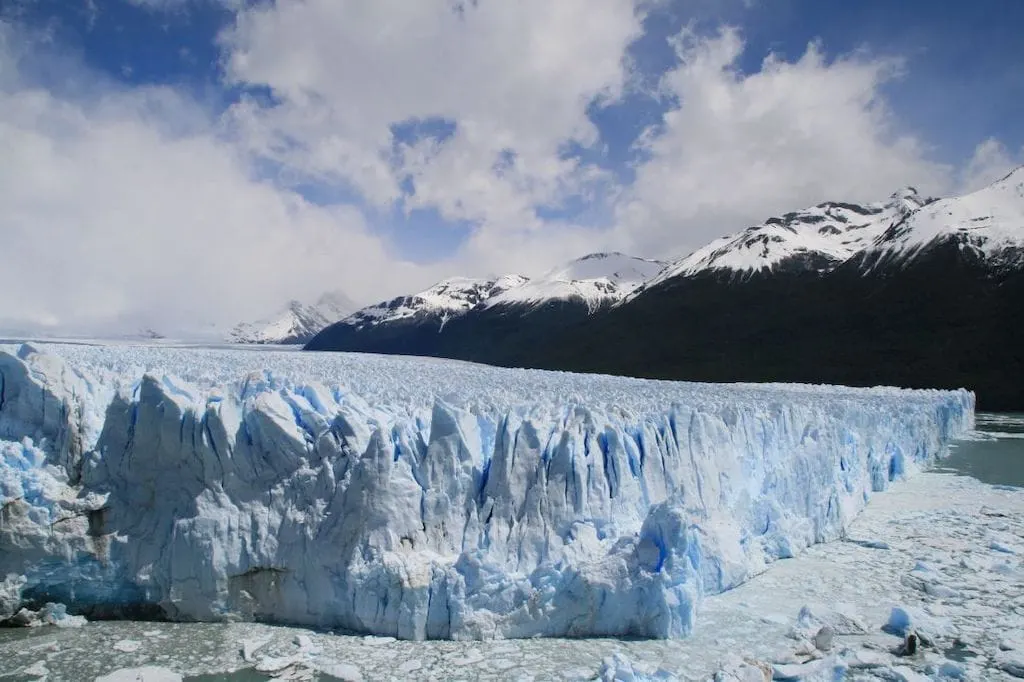
14. The Curutchet House in La Plata
The Curutchet House built in La Plata, the capital city of Buenos Aires Province, is a modern landmark of Argentina designed by the French-Swiss architect Le Corbusier. It was made for Dr. Pedro Domingo Curutchet, a local surgeon in 1948, and combines a small medical office, a courtyard, and clinic on its four levels.
The Curutchet House embodies Le Corbusier’s five points of architecture and unites a ramp and a spiral staircase with his trademark style. As such the Curutchet House was awarded UNESCO World Heritage Status as part of “The Architectural Work of Le Corbusier, an Outstanding Contribution to the Modern Movement” listing which includes many sites in France, along with international works like the National Museum of Western Art in Tokyo and the Maison Guiette in Antwerp.
The Curutchet House is currently occupied by the Buenos Aires professional association of architects but is open for tours daily. It is the only home in the entire American continent designed by the Corbusier and makes an excellent day trip from Buenos Aires.
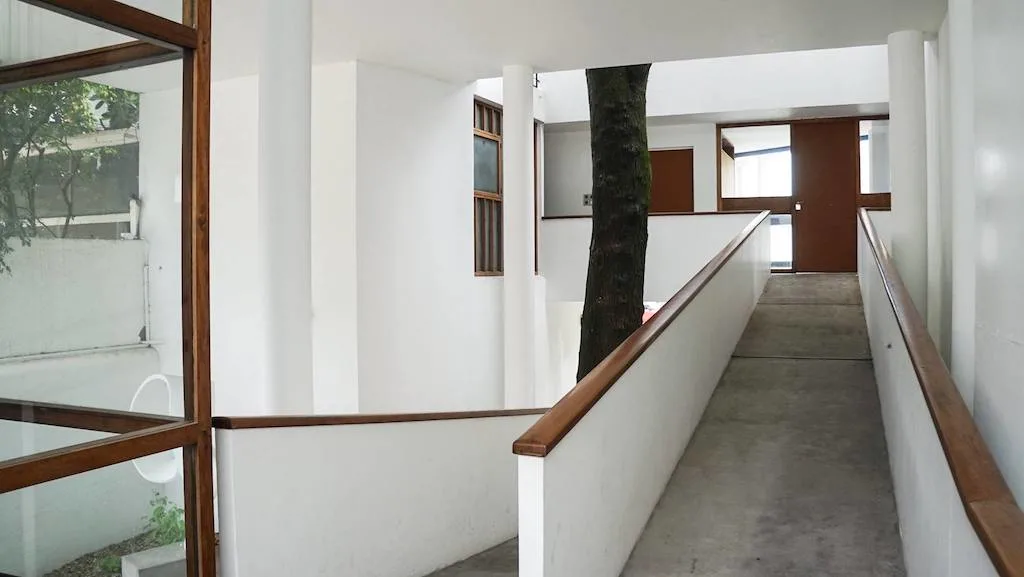
15. Iguazu Falls
The majestic Iguazu Falls are the world’s largest waterfall – and is so big it spans two countries falling on the border of the Argentine province of Misiones and the Brazilian state of Paraná.
The semicircular waterfall is not just one of the famous landmarks of Argentina but also one of the most famous attractions in South America. Falling 80 meters of basalt rocks and being 2,700 m in diameter, bearing witness to the sheer power and grandeur of Iguazu Falls, is a bucket list item if ever there was one – and far more natural experience than the Starbucks and McDonalds surrounded Niagara Falls.
The cascades producing vast sprays of water, which is nothing short of spectacular – but make sure you are well equipped for your visit as things can get very, very wet.
The encompassing subtropical rainforest, along with the waterfalls, is recognized as a transboundary natural UNESCO World heritage sites like the Sundarbans Wetlands shared between India and Bangladesh. In the jungles here, there are over 2,000 species of vascular plants and many of South America’s iconic wildlife species like the tapirs, giant anteaters, howler monkeys, ocelots, and even jaguars.
Plan to spend one day exploring each side of the UNESCO World Heritage Site if you can. The Brazil side has the best panoramic shots (as 80% of the falls is in Argentina which you look across at), but the Argentinian side has better trails, more viewing points, and choices for activities.

16. Fitz Roy Mountain Range
If you’ve been to Argentinian Patagonia, you will recognize the Fitz Roy mountain range as one of the most iconic landmarks in Argentina.
Spanish explorers already discovered the peak in 1783, but it wasn’t until almost a hundred years later that the mountain received a name. Francisco Moreno, a famous Argentinian explorer, named it after Robert FitzRoy, a British captain who had chartered large parts of the Patagonian coast.
If you want to see Mount Fitz Roy, you need to travel to El Chalten in Patagonia. From here, you can plan a day trip to Laguna De Los Tres, which will take you as close to Mount Fitz Roy as you can get. During the hike, you will walk up to a lagoon where you can admire the turquoise water with a backdrop of Mount Fitz Roy. As the trip to the Laguna De Los Tres takes around 8-9 hours, make sure to leave early in the morning.
If the idea of a hike that includes walking uphill for many hours sounds too exhausting for you, then you should head for one of the viewpoints near El Chalten. From the Miradores del Condor and de las Aguilas, you have a fantastic view of Mount Fitz Roy. The Mirador del Condor is closest to town, and you can hike here and back again in a little less than an hour. Try to go on a clear day so you can see the mountain range well.
While in El Chalten, make sure to check out the other points of interest in the area, too. You can hike to the Huemul Glacier, for example. And if you get tired of hiking, book a boat ride on the Lago del Desierto or visit the Casa Madsen to learn more about the region.
Explored by Daniel and Ilona from Top Travel Sights
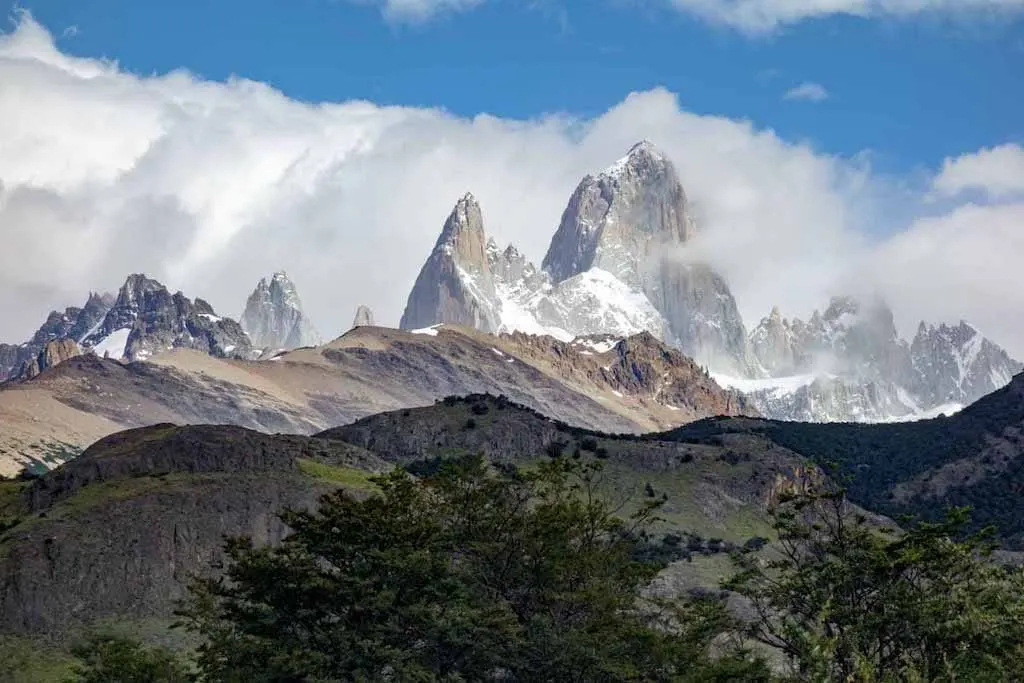
17. The Cathedral of Córdoba
Córdoba is the second-largest city in Argentina, and it is known for two main things. The first – the universities, which attract thousands of students, making it a young, fun, and lively city. This is part of the city’s heritage, as it is the hometown of the oldest university in Argentina. The second is the old Spanish colonial architecture that is hard to miss. The city center and the old University of Córdoba are full of historic buildings, that make you feel like you jump back in time.
One of these buildings is the Cathedral of Córdoba, located in Plaza San Martin, and facing the statue of San Martin – the Liberator of Argentina (Chile and Peru as well) from the Spanish Empire. The cathedral is the oldest church in continuous usage in Argentina, and that is a fantastic reason to visit here. The construction started in 1582, but the building collapsed about a hundred years later. It was then redesigned and opened to the public in 1709, even though it was completed and consecrated only in 1784.
The outside of the cathedral has a classic and clean design, but the inside of the cathedral is impressive and beautiful. The high ceiling and the murals were designed and painted by famous local artists throughout the years, and in 2007 it underwent extensive restoration works. The crypt of the cathedral is the burial place of some prominent figures from around the province. These include military generals, religious leaders, and the first rector of the University of Córdoba.
The Cathedral of Córdoba is the best place to start your trip in the city. The surrounding streets are where most of the historical monuments and landmarks are located, and they are full of restaurants, cafes, and other shopping opportunities. For first time visitors, this is also the best area for accommodation.
Explored by Moshe Huberman from The Top Ten Traveler
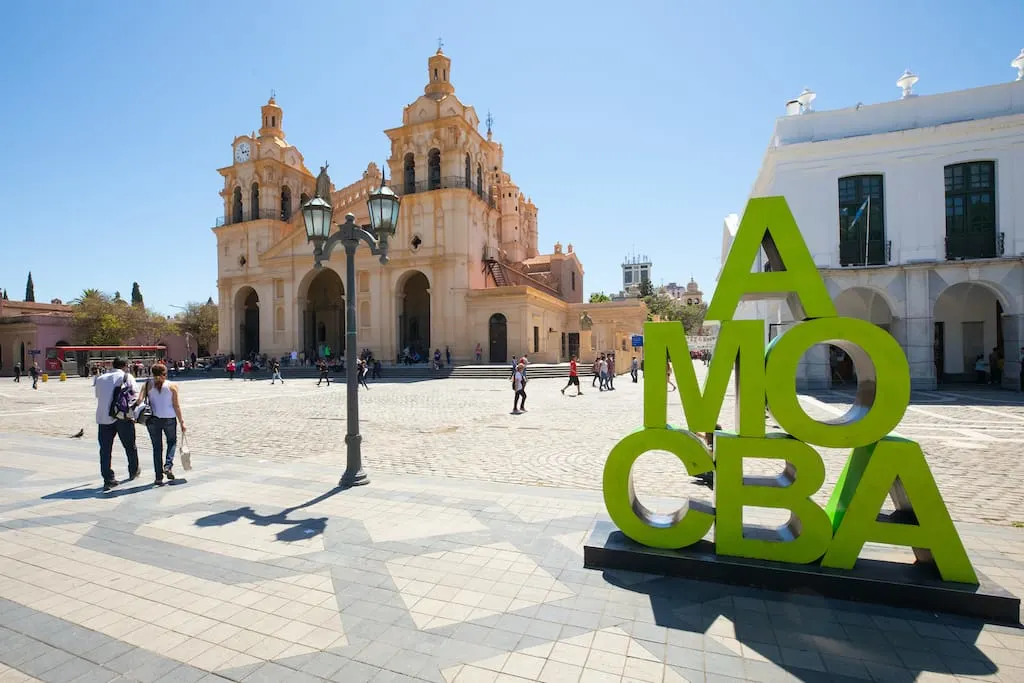
18. Salinas Grandes
Located in the Northwest of the country, the Salinas Grandes is one of Argentina’s 7 Natural Wonders. Once an enormous glacial lake, following the end of the ice age, the water of the enclosed basin evaporated to reveal a thick layer of salt sediment.
Uniquely formed in large hexagonal tiles over millions of years, the natural phenomenon is further characterized in parts by long rectangular turquoise pools, which are the result of salt mining.
The blinding white expanse covers 4,700 sq km and is the third-largest salt flats in the world. Spanning the two vast provinces of Jujuy and Salta, from specific directions, the Salinas Grandes can feel like they just go on forever.
In contrast with the bright blue skies, the salts flats of Argentina are even more spectacular in the rainy season when a layer of water covering the surface creates a mirror-like effect, making it appear as though you are walking in the clouds.
To get there, you take a minivan tour from the nearby town of Purmamarca, or you can rent a car and drive yourself there. The national highway of Ruta Nacional 52 runs right through the middle, so you quite literally can’t miss them.
As they are completely open, there aren’t any actual opening times or admission fees for Argentina’s Salinas Grandes. But do beware of altitude sickness – at 4,500 meters above sea level, the air gets pretty thin up there. And don’t forget your camera and some props to take some cool perspective photographs.
Explored by Sarah and James from The Whole World Or Nothing
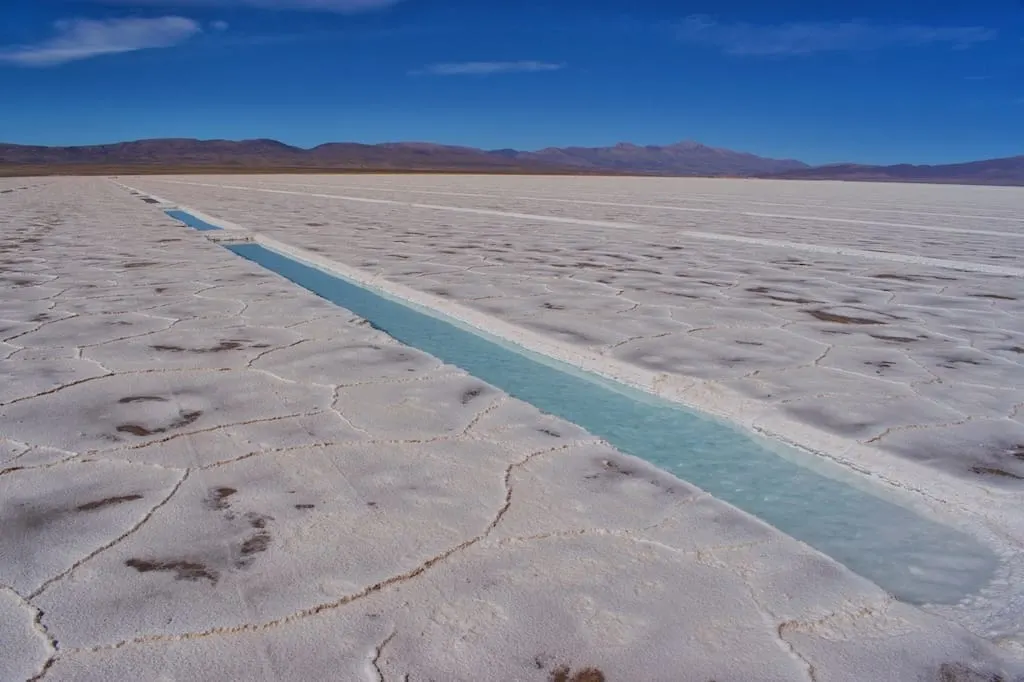
19. The Beagle Channel
Marking the very southern tip of Tierra del Fuego in the far south of Argentina, the Beagle Channel is a place of myth and legend. It’s where itinerant indigenous groups once sailed between the scattered islands of the Patagonian fjords and were first reached by Europeans on the British ship, the HMS Beagle in the 1820s – a vessel that would later revisit with the as yet unknown naturalist, Charles Darwin.
I have a suspicion that most of the channel has changed little in the intervening centuries, and the most exceptional way to approach it is still by boat. It’s accessible from both Chilean and Argentine Patagonia, with the towns of Ushuaia (Argentina) and Puerto Williams (Chile) lying on its northern and southern banks, respectively.
From Ushuaia, boats take you out on the channel for day trips to visit Isla de Los Lobos (an island with sea lion and seal colonies), the Faro Les Éclaireurs (an iconic, red and white, 1920s lighthouse), as well as Magellanic penguin colonies further east. From the boat, you can admire the montane landscapes that act as a backdrop to Ushuaia, with many of the peaks still bearing snow even in the summer.
But the most compelling feature of the Beagle Channel is how remote and untouched it feels. As soon as you leave Ushuaia, there are no further marks of civilization and, if you keep a close eye on the waters surrounding your boat, you’ve got a good chance of sighting whales. Southern right and humpbacks the most commonly seen, although there’s a chance you might encounter blue whales and even orcas.
Visiting the Beagle Channel is an essential part of any trip backpacking through South America and Patagonia. The best months for exploring here are from October through April when the weather is mild, and tourism facilities are open, although, for whales, January through April is best.
Explore by Steph Dyson from Worldly Adventurer.com

20. La Boca
While Buenos Aires is certainly not short of color, the landmark La Boca area has more than its fair sheer – and is instantly recognizable as a famous landmark of Argentina.
A typical working-class located close to the Riachuelo River, La Boca has experienced a tourism boom and is now home to steakhouses, souvenir shops, galleries, and museums. And La Boca is one of the best places to eat in Buenos Aires – if only for the vibe and world-class people-watching.
The narrow alley with brightly painted zinc shacks points to the area’s early immigrant days, and the Caminito pedestrian street is famed around the world for its tango performances. The street art here is truly exceptional. La Boca is bohemian, artsy, and popular with visitors for a good reason – but the exact area visited by tourists is only a few blocks.
Outside this, La Boca is still a relatively poor neighborhood. Gentrification is changing this, however, as hotels, modern art galleries, and more move in. Whether this is for better or worse, we will let you decide – but we just hope La Boca remains as colorful and full of life in the future.
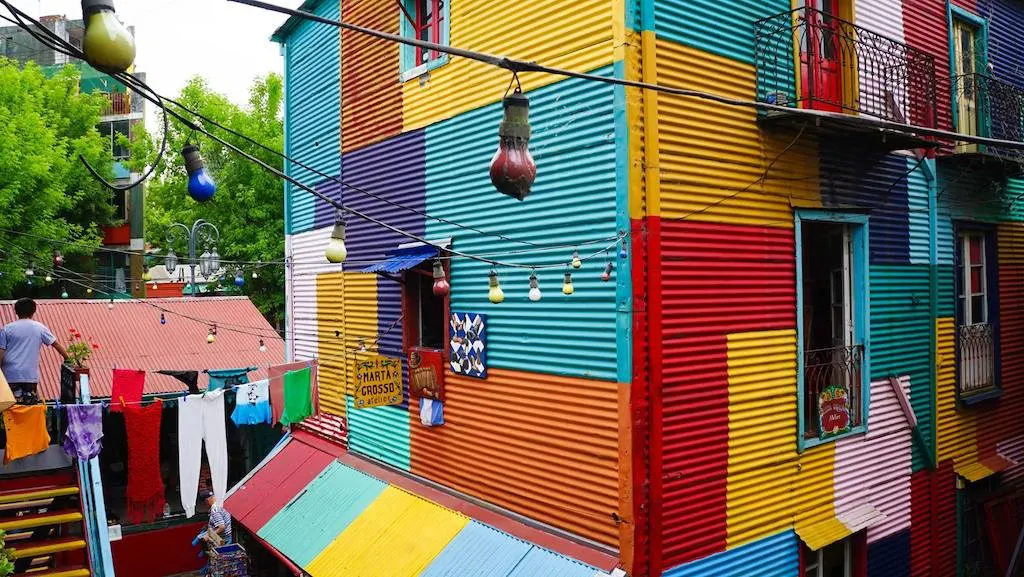
21. Península Valdés
Remotely located In the Argentinian Pampa on the Atlantic coast and more than 20 hours drive from Buenos Aires, the Peninsula Valdes is a heaven for animal lovers and wildlife photographers. Sure, it requires a lot of effort to get there, but every minute spent in the National Park looking for killer whales, Magallanes penguins, guanaco, Nandus, armadillos, and elephant seals, is worth the hassle.
From June to December, it is even possible to go on a boat or kayaking trip to see the Southern right whales migrating from the Antarctic ocean to the peninsula to give birth and mate. A unique experience to not miss.
To visit the Peninsula Valdes, it is recommended to stay in Puerto Madryn, the largest city in the area, and take day trips to the national park and the surroundings. You can rent a car or join a guided tour, but for those with enough time and budget, it is also possible to find a place to stay within the park in one of the few lodges near Punta Norte.
The Peninsula Valdes is one of the most impressive places to visit in South America with such a unique landscape and wildlife. We can only recommend to add it to your Argentinian Bucket list.
Explored by Jenny from Tales from the Lens
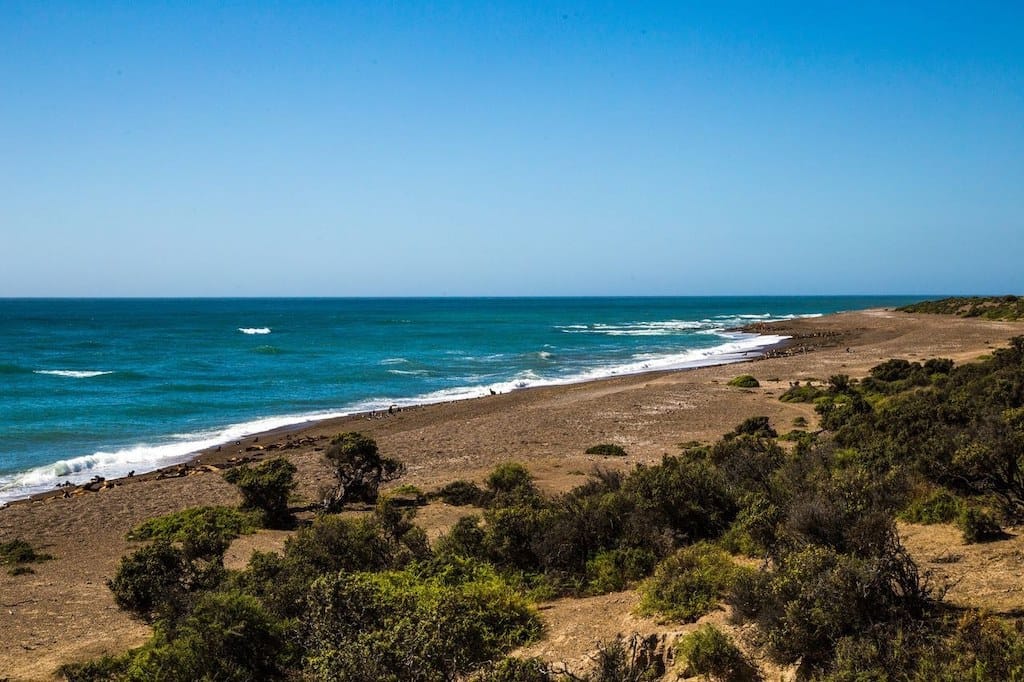
22. Quebrada de Cafayate
The north of Argentina is sadly often overlooked by visitors to the country. But for those who make the effort, they are always blown away by the astonishing and varied landscapes of the region.
One of the must-visit sites in Salta province is the Quebrada de Cafayate, a part of the Calchaquíes Valley. Also known as the Quebrada de las Conchas, this ravine is famous for its beauty, with rippled red rock formations that could easily be confused with Zion National Park or the Grand Canyon in the United States. It was formed by tectonic movements sometime in the past two million years.
Along the ravine, you can stop at the many rock formations. El Sapo resembles a squatting toad, El Obelisco is a spire, and the Casa de Los Loros is home to parrots (loros means parrots in Spanish).
The two most impressive and famous formations, however, are El Anfitreatro (the Amphitheatre) and La Garganta del Diablo (the Devil’s Throat). It’s not uncommon to find a musician at El Anfitreatro demonstrating the cavern’s natural acoustics.
The Quebrada is a short drive from the town of Cafayate – a town undoubtedly worth a visit to explore its reputation as the “other” wine region of Argentina. Known for its fresh Torrontés grape varietal, you can easily while away a few days here exploring Cafayate’s many wineries.
The Quebrada de Cafayate can’t be missed when driving between Cafayate and the city of Salta (also home to the province’s main airport). Make sure to add in an hour or two to your drive so that you have time to stop at each of the formations. I recommend renting a car for the visit so that you can stop where you please, rather than taking a bus tour.
Explored by Rebecca of Rebecca and the World
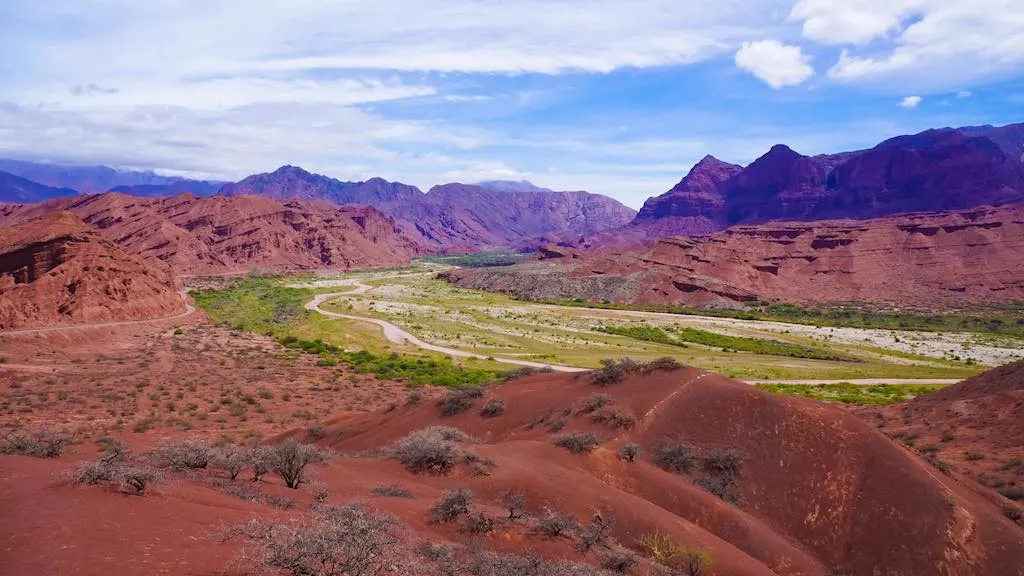
23. Talampaya National Park
When visiting South America, visiting Argentina is a must. In Argentina, you must visit Parque Nacional Talampaya. Parque Nacional Talampaya in northeast Argentina belongs to La Rioja province, which has spectacular rock formations and canyons with dusty deserts.
These are evidence of the erosive creativity of water and wind. It covered an area of more than 2000 square kilometers and located at an altitude of 1500 meters above sea level. Fall and Spring are the best seasons to visit this place, winter is freezing in the morning, but then the temperature rises, and there is a lot of thermal amplitude and Summer is scorching hot, and the only time of the year in which rains are recorded regularly.
The main area of the park is the dry bed of the Talampaya River. At one point while traveling, the valley turns into an impressive gorge 80 meters wide and 143 meters deep. Inside the park, foxes, guanacos, desert rabbits, maras, and condors are spotted. There is a little town of Villa Unión in La Rioja Province, which is just about 45 minutes from Talampaya, so staying here is always better.
The privately managed and tours are a bit larger here around ten people. The Talampaya Canyon excursion should be opted, which goes from the park exit and reaches the most famous geoform in the place, El Monje. Along the way, it passes through several fascinating places, always surrounded by massive red walls over 100 meters high. One of the renowned spots is the Petroglyphs area, where drawings carved in stone thousands of years ago by the original inhabitants of the area are seen.
Explored by Tanayesh from Shoestring Travel
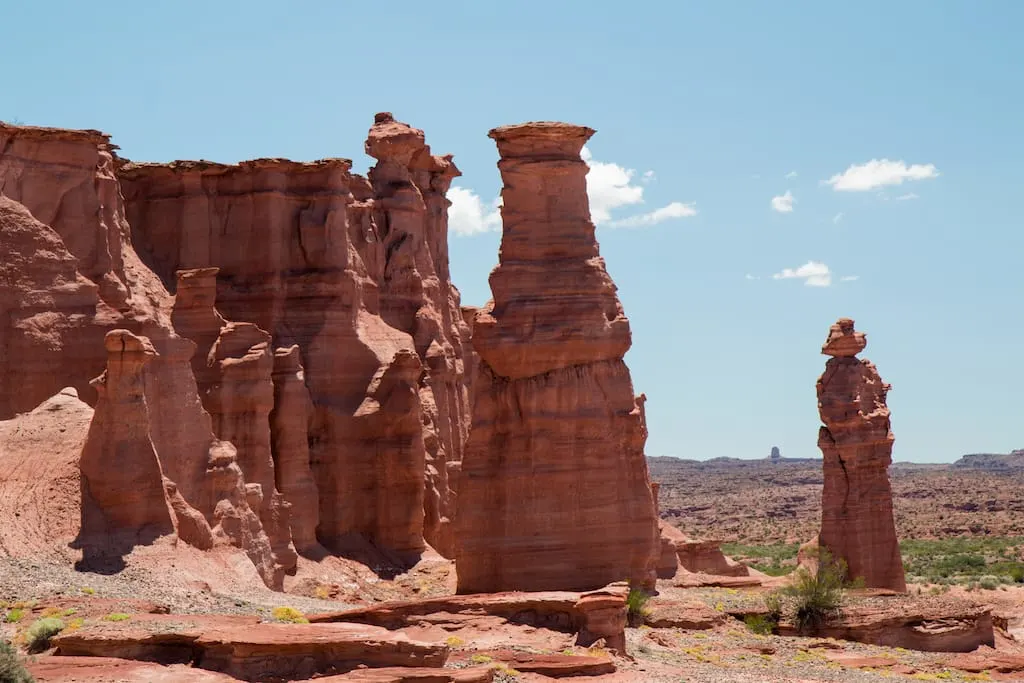
24. Museo Arquelogia De Alta Montana
Salta is one of the highlights of any visit to Argentina. The charming city with its colonial architecture and lush natural surroundings is a South-American gem. One of the must-visits in Salta is the Museo Arquelogia de Alta Montana (or short: MAAM), an iconic landmark in Argentina.
The MAAM museum is located right at the main square, Plaza 9 de Julio. It’s located in one of the most monumental buildings in the city.
The collection on the Inca culture focuses on the child sacrifices on the mountain peaks in the Andes. On display are three Inca children, mummified because of the natural conditions high up in the Andes.
Human sacrifices weren’t unusual for the Inca’s. Archeologists believe they selected the children from the most influential families and brought them high up mountains to their holy places. They celebrated for days and eventually buried their sacrifices alive to honor their gods.
The three Inca children were discovered in 1999, and their bodies were perfectly mummified. The oldest is a 15-year old girl, and the others are a 6 or 7-year old boy and girl. Usually, only one of them is on display.
The Museo Arquelogia de Alta Montana has more Inca items on display, and just the unique mummy story is enough not to miss the MAAM on your visit to Salta. It’s a unique experience to see them up close and imagine what they must have been through.
Explored by Maartje and Sebastiaan from The Orange Backpack
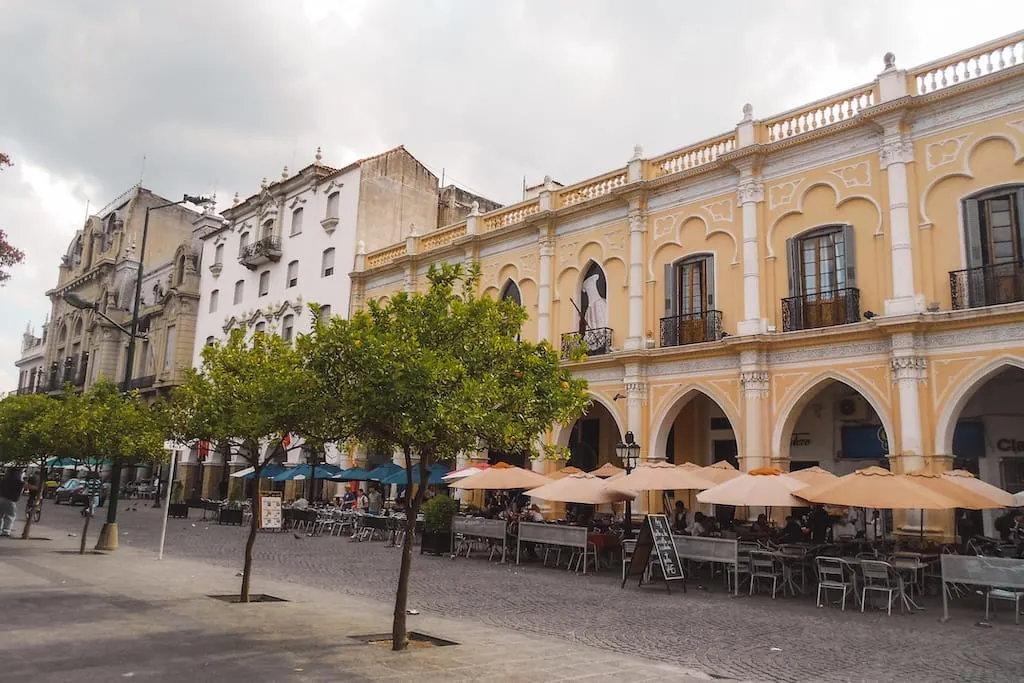
25. Recoleta Cemetery
One of the most famous landmarks of Buenos Aires, almost every tourist flocks to the grave of Argentina’s famed first lady Eva Peron at Recoleta Cemetery.
Hailed as one of the most beautiful cemeteries in the world, along with the Hietaniemi cemetery in Helsinki and Vienna’s Zentralfriedhof, the 5.5 hectares site includes 4691 vaults, all located above ground, of which around 100 have been declared National Historical Monuments of Argentina and as such – are protected by the state.
Establish in 1822, a wide variety of architectural styles can be seen in the graves here, ranging from Art Deco and Art Nouveau to Baroque, and Neo-Gothic. And it’s not just Eva Peron who have been laid to rest here. The presidents of Argentina, Nobel Prize winners the granddaughter of Napoleon can all be found here.
The Recoleta Cemetery is laid out in sections like city blocks. You could easily get lost here if you were not careful amidst the elaborate marble mausoleums and tree-lined main walkways. With absolutely breathtaking architecture and design, plan to spend a few hours here and eat and drink before you come. Recoleta Cemetery may be one of the most popular places to visit in Buenos Aires, but there are (rightfully so) no restaurants or places to buy snacks.
If you want to get all the stories behind these people, families, and crypts, you should take a Recoleta Cemetery tour.
